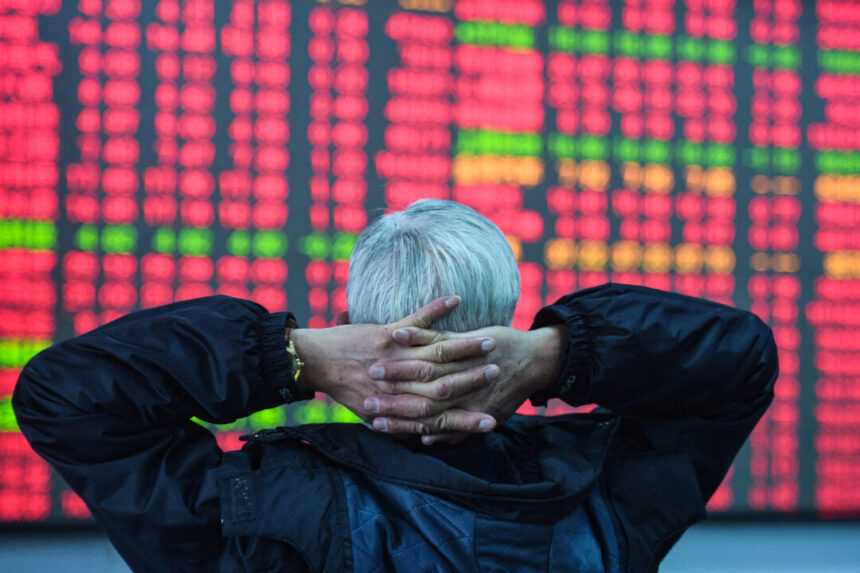Commentary
Capital flight from China has persisted, with reports indicating up to
$254 billion leaving the country in the year leading up to June 2024. This trend poses significant challenges, considering that individuals exceeding the permitted $50,000 annual transfer limit risk severe penalties, including imprisonment and fines amounting to more than half the transferred sum upon conviction. Despite these deterrents, individuals have found various methods to circumvent the restrictions, as highlighted in a recent report by The Wall Street Journal on Oct. 23. In a more liberal economic system, such capital transfers would likely be more commonplace.
The mechanisms facilitating these wealth transfers encompass a range of strategies, including the use of cryptocurrencies, high-value art exports, inflated payments for imports, dividends channeled to offshore entities, and collaborations between Chinese and foreign companies. Transferring assets to Hong Kong, a jurisdiction without capital controls, often serves as an intermediary step in this process.
The ongoing capital flight, coupled with net outflows in direct investment totaling $86 billion in the second quarter of 2024, has exerted downward pressure on the yuan and property values. Estimates suggest that property values in China have plummeted by $18 trillion since 2021.
The exodus of capital from China can be attributed to a multitude of enduring issues, primarily stemming from the country’s communist governance, which prioritizes state intervention over free-market principles and democratic values. The strict lockdown measures imposed by the Chinese Communist Party (CCP) in response to the COVID-19 pandemic significantly escalated public dissatisfaction and triggered a surge in capital flight from 2021 to 2022.
The economic indicators signaling distress in China hint at further challenges ahead. The International Monetary Fund (IMF) downgraded China’s growth forecast for 2024 by 20 basis points to 4.8 percent on Oct. 22. The IMF projects a continued decline in China’s growth rate, foreseeing it to drop to around 3 percent by the end of the decade. These projections may be optimistic, given the reliance on potentially inflated data reported by Beijing.
Between 2021 and early 2024, China’s CSI 300 (mainland) stock index plummeted by nearly
40 percent, while Hong Kong’s Hang Seng China Enterprises index experienced a decline of approximately 50 percent. Despite Beijing’s efforts to stimulate the economy through various measures, such as interest rate cuts, support for homeowners, equity purchases, and other interventions, the market only saw temporary respite. These initiatives failed to instill lasting confidence in equity markets or reverse the downward trend in stock indices.
Although the CSI 300 and Hang Seng China Enterprises indexes showed marginal improvements post-stimulus measures, their performance in October has been lackluster, with a downward trajectory observed.
While investors initially welcomed and capitalized on the short-term stimuli provided by Beijing, many are now waiting for substantial fiscal spending measures that have yet to materialize. Even if significant stimuli are introduced in the future, they would represent a continuation of the state interventionist approach that contributed to China’s economic challenges.
Historically, government intervention in economies has hindered long-term growth prospects. Beijing’s recent interventions, termed as a “combination punch,” may further impede economic recovery. Structural issues such as demographic decline, unemployment, trade disputes with global partners, escalating tariffs targeting China, dwindling domestic consumer demand, and deflation remain unaddressed, exacerbating the economic woes.
The economic policies championed by Xi Jinping play a pivotal role in exacerbating China’s economic woes. Initiatives like subsidizing green energy and advanced semiconductors serve strategic military objectives rather than enhancing the welfare of Chinese citizens. By fostering energy independence through nuclear, wind, solar, and hydro technologies, China seeks to mitigate risks associated with potential disruptions in oil and coal imports during a conflict over Taiwan. However, the heavy subsidization of semiconductor production poses inefficiency risks and strains diplomatic relations with trading partners, leading to heightened trade tensions and tariff impositions.
The looming threat of additional
tariffs from major economies like the United States, India, and Indonesia, coupled with Beijing’s belligerent stance toward Taiwan, is anticipated to spur further capital flight from China. A potential conflict over Taiwan could incur substantial economic costs, estimated at around
$10 trillion, with China and its trading partners bearing a significant burden.
Given these challenges, a continuation of capital flight and negative direct investment in China by both domestic and international entities is expected in the coming period.
Views expressed in this article are opinions of the author and do not necessarily reflect the views of The Epoch Times.







